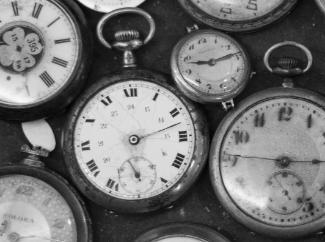Synchronising the Senses
June – September 2017
 Core members
Core members
- Principal Investigator: Professor Fiona Macpherson
- Postdoctoral Investigator: Dr Keith Wilson
External advisors
- Professor Christoph Hoerl (Warwick, Philosophy)
- Dr Simon Prosser (St Andrews, Philosophy)
- Professor Charles Spence (Oxford, Experimental Psychology)
- Professor Lars Muckli (Glasgow, Cognitive Neuroscience)
Funding
The John Templeton Foundation, via the University of Cambridge New Directions in the Study of the Mind project.
We seem to perceive the world as it is in the present moment, as a continuous and seamless stream of events, without interruption or delay. Yet scientists now know that each of our senses—vision, hearing, touch, and so on—works on slightly different timescales, with information from each sensory organ taking a different amount of time to process in different parts of the brain. How, then, do these different streams of information become combined, or integrated, into an apparently coherent and continuous experience, or is the continuity of experience itself a kind of illusion?
In this project, we examine the implications of the latest philosophical and psychological research on multisensory perception, i.e. perception that involves more than one of the senses, for our understanding of how experience is structured over time. In particular, we aim to understand
- How we are able to perceive, with a reasonable degree of accuracy, events as occurring simultaneously across multiple sensory modalities
- How it is possible that we have a unified and coherent experience of the ‘present’, or ‘now’ despite the various time lags involved in sensory processing.
One theory that has been put forward to address these questions is that external events which occur within a very short time period, or ‘window of integration’, are experienced as occurring simultaneously, regardless of sensory modality. For example, when you both see and hear a dog barking, the sound seems to occur simultaneously with the movement of the dog’s mouth, even though sounds take longer to travel to your ears than the light from the dog does to reach your retinas. Conversely, events that fall outside this window are experienced as non-simultaneous (compare the case of thunder and lightning, which are typically perceived as separate events unless the storm is very nearby).
According to this theory, perceptual experience consists of a series of such ‘windows’, each presenting a single moment of subjective time, much as a cinema film consists of static frames which, when played back at the correct rate, create the illusion of continuous movement. This ‘cinematic’ view of experience may be contrast with the idea that perceptual processing is itself continuous, and so cannot be reduced to a series of momentary snapshots or frames. By examining the principles and mechanisms underlying our perception of simultaneity across the senses, we aim to shed light upon whether perceptual experience is ‘cinematic’ or continuous, and to evaluate the implications of these accounts for philosophical views of how we experience time and change.
This project forms a pilot study for an extended three-year interdisciplinary research project into the temporal structure of experience. This will bring together cutting-edge philosophical and scientific research in both perception and time-consciousness in order to reach a better understanding of the profoundly important role that time plays in shaping and structuring human experience.

